05. E-textiles¶
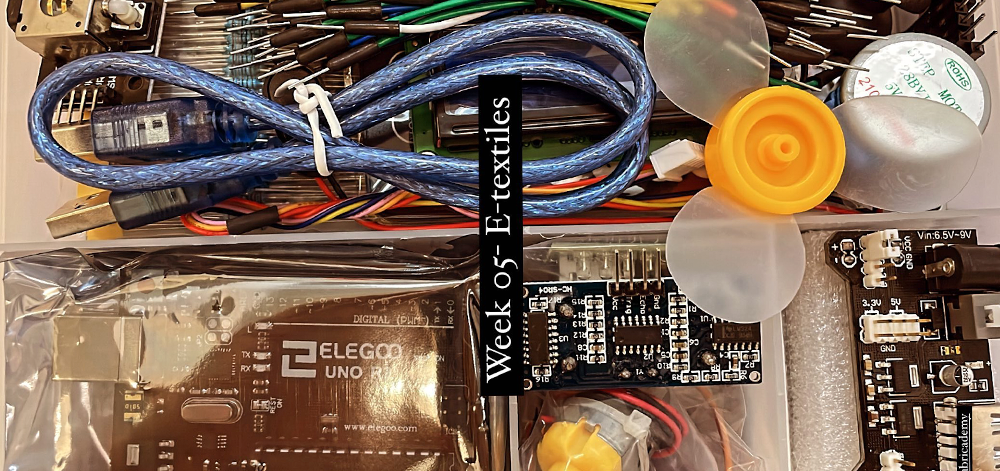
Ideation¶
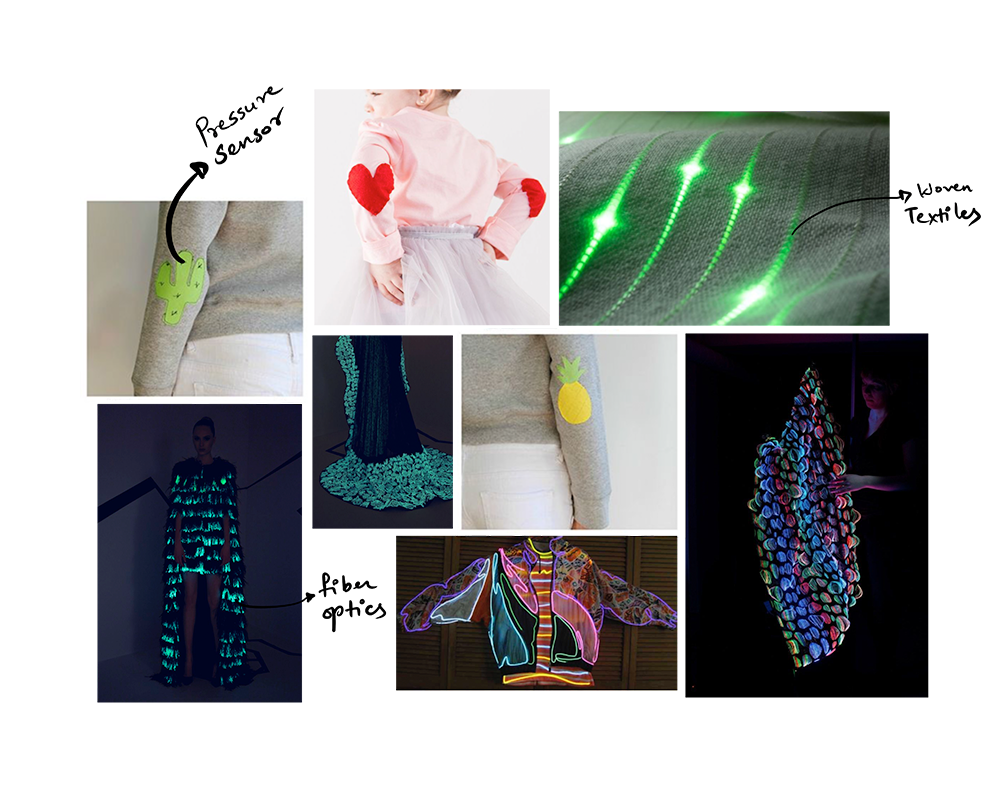
The idea for this week's assignment was to create an interactive elbow patch for kidswear, for which, I want to make a digital sensor, connected with a light or some interactive cartoon on the t-shirt, so when the pressure/stretch is applied onto the elbow the light glows.
Theory¶
-
ELECTRICITY- The flow of electric charge
-
CIRCUIT - a path of electricity to flow, Electric flow is the movement of electrons which always flows from positive pole to the negative pole.
-
CURRENT - The flow of electricity through an object. This is measured in amperes (A) or milli-amperes (mA), 1000 mA = 1A.
-
VOLTAGE - Voltage is the pressure from an electrical circuit's power source that pushes charged electrons (current) through a conducting loop, enabling them to do work such as illuminating a light. In brief, voltage = pressure, and it is measured in volts (V).
-
RESISTANCE - Resistance is a measure of the opposition to current flow in an electrical circuit. It allows the ammount of electrons to pass, The higher the resistance, the lower the current flow. Resistance is measured in ohms, symbolized by the Greek letter omega (Ω).
-
OHM'S LAW - Ohm's law states that the current through a conductor between two points is directly proportional to the voltage across the two points. Introducing the constant of proportionality, the resistance.
-
I=V/R
- Where, I = Currrent > V = Voltage > R = Resistance
Assignment¶
Build at least one digital and one analogue soft sensors, using different materials and techniques.
Document the sensor project as well as the readings got using the AnalogRead of Arduino
Integrate the two soft sensors into one or two textile swatches using hard soft connections
Document the circuit and it’s schematic
Document your swatches
Upload a small video of the swatches functioning
EXTRA POINT Integrate the swatch into a project
Tools¶
We worked with super starter kit UNO R3 Project, which had many useful materials in a small kit.
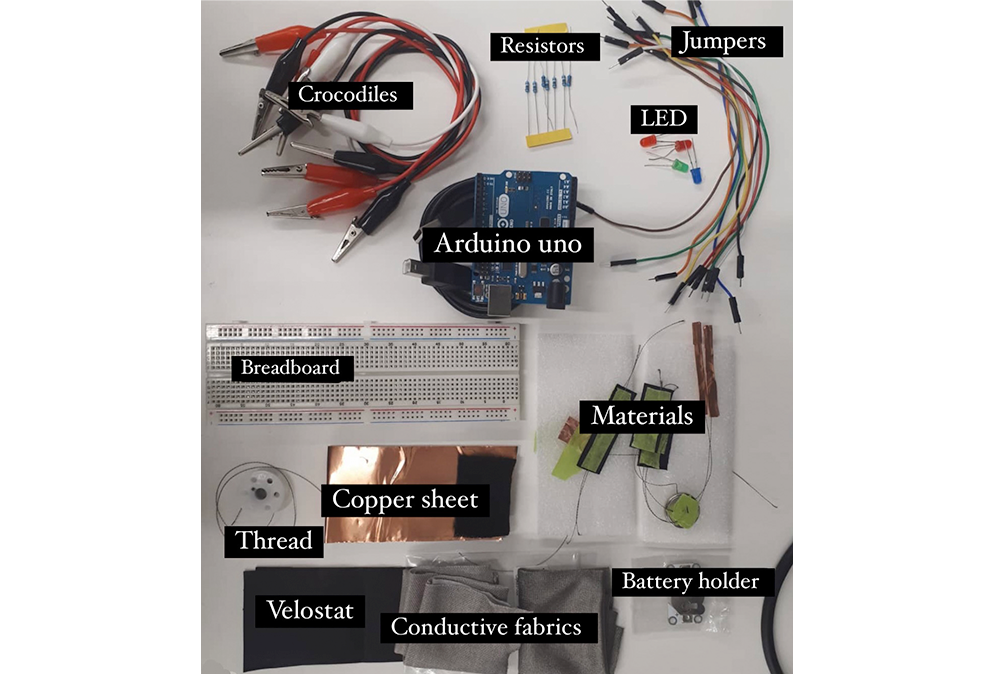
-
ARDUINO BOARD - Arduino is an open-source electronics platform based on easy-to-use hardware and software. Arduino boards are able to read inputs - light on a sensor, a finger on a button, or a Twitter message - and turn it into an output - activating a motor, turning on an LED, publishing something online.
-
BREADBOARD - A breadboard is used to build and test circuits quickly before finalizing any circuit design. The breadboard has many holes into which circuit components like ICs and resistors can be inserted.
-
JUMPERS - A jumper is a short length of conductor used to close, open or bypass part of an electronic circuit.
-
LED - An LED lamp or LED light bulb is an electric light that produces light using light-emitting diodes.
-
RESISTORS - A resistor is a passive two-terminal electrical component that implements electrical resistance as a circuit element. In electronic circuits, resistors are used to reduce current flow, adjust signal levels, to divide voltages, bias active elements, and terminate transmission lines, among other uses
-
CROCODILE CABLE CLIPS - A crocodile clip (also alligator clip) is a sprung metal clip with long, serrated jaws which is used for creating a temporary electrical connection.

- MULTIMETER - A multimeter is a measuring instrument that can measure multiple electrical properties. A typical multimeter can measure voltage, resistance, and current, in which case it is also known as a volt-ohm-milliammeter (VOM), as the unit is equipped with voltmeter, ammeter, and ohmmeter functionality. Some feature the measurement of additional properties such as temperature and volume. here we can only measure voltage, resistance and current.

-
VELOSTAT - This conductive material (also known as "Velostat" or "Linqstat") is a nice addition for wearable/sensor hacking toolkit. It's pressure-sensitive: squeezing it will reduce the resistance, so it's handy for making flexible sensors. It is a packaging material made of a polymeric foil (polyolefins) impregnated with carbon black to make it electrically conductive. It is used for the protection of items or devices that are susceptible to damage from electrostatic discharge.
-
EEONTEX - This EeonTex fabric is a conductive, nonwoven microfiber with piezo-resistive functionality for use in dynamic sensors to map and measure pressure, bend, angle stretch and torsion.
-
COPPER SHEET - It is used as a conductive foil with non-conductive fabrics to pass current and close the circuit.
-
CONDUCTIVE THREAD - This thread can be used alone or pair up with other non-conductive threads to make interesting sensors like stroke sensor. It basically carries current through non-conductive fabrics.
-
CONDUCTIVE ELASTIC - This elastic can be used in crochet which has lights at the hem and can be used to supply electricity to the same.
First we made a simple circuit with an on and off switch and LED.
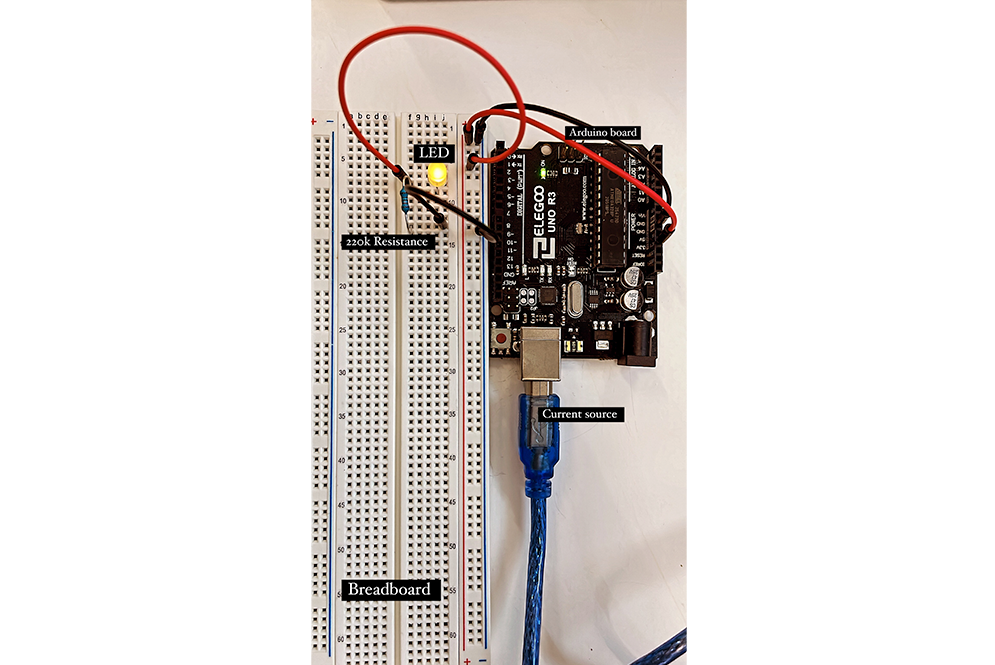
Going on with Arduino software, we tried different examples that were in-built, like - Blink. Don't forget to select "Arduino uno" under Tools>board to run the code.

Making of the sensor¶
For making the sensor, here I have 2 pieces of non-conductive fabric, with embroidery done using conductive thread to pass the current across the circuit. Velostat is sandwiched between fabric and a little copper fabric at the end to connect wires.

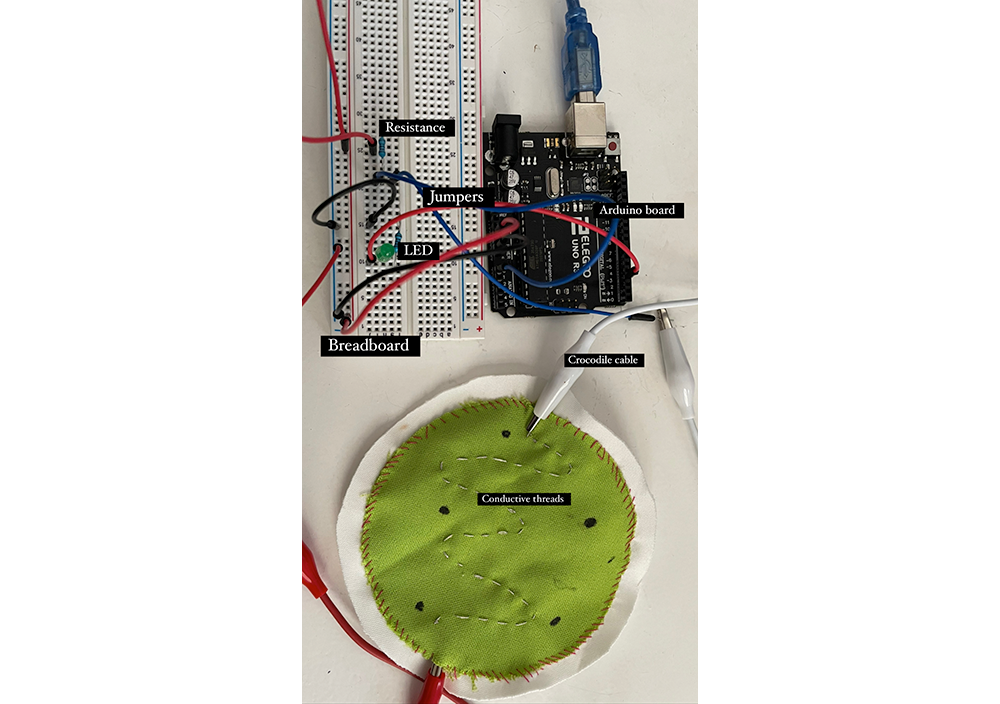
Code used for this¶
int sensor = A0;
int LED = 3;
int reading;
int mapping;
void setup() {
// put your setup code here, to run once:
pinMode(sensor, INPUT);
pinMode(LED, OUTPUT);
Serial.begin(9600);
}
void loop() {
// put your main code here, to run repeatedly:
reading = analogRead(sensor);
mapping = map(reading, 1023, 0, 0, 255);
analogWrite(LED,mapping);
Serial.println(reading); }
Useful links¶
Thanks for reading! Hope you liked it! :)